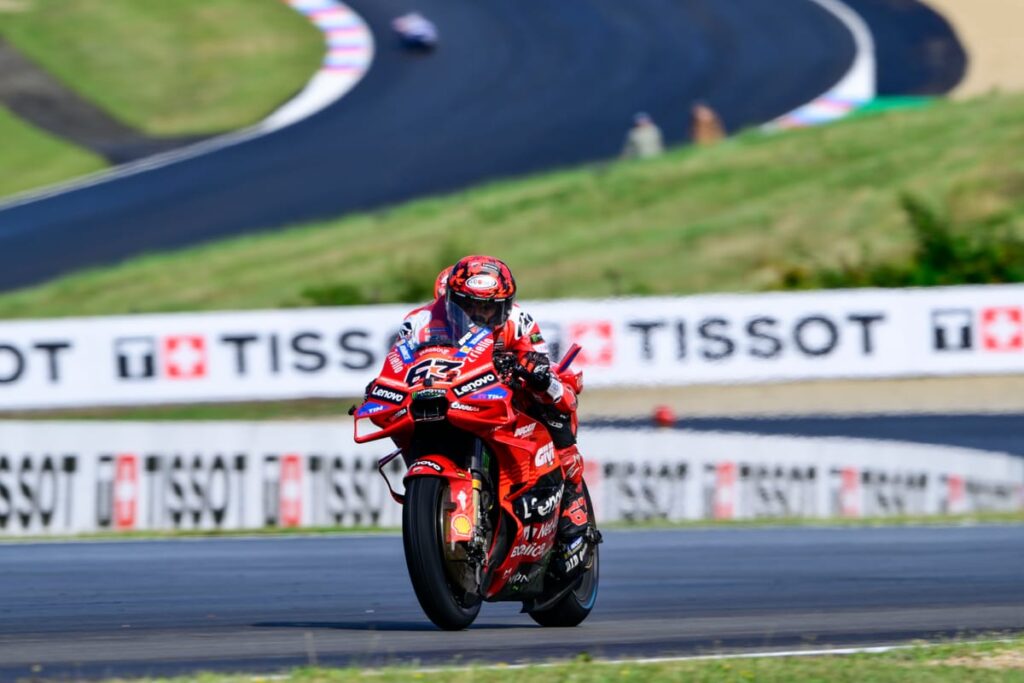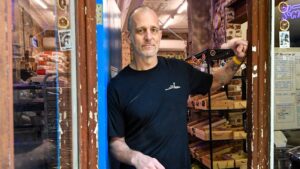
Ducati MotoGP rider Pecco Bagnaia has expressed frustration over what he described as an “incorrect strategy” that led to his disappointing performance during Friday’s practice sessions at the Czech Grand Prix in Brno. Despite showing promise in the wet conditions, Bagnaia found himself struggling to secure a top-10 spot, which would have guaranteed him a place in Q2.
The Italian rider’s comments come on the heels of a challenging race at the Sachsenring, where rain hampered his performance. At Brno, however, the newly resurfaced track provided additional grip, allowing Bagnaia to appear competitive through the opening day. Although his teammate Marc Marquez was significantly ahead, Bagnaia seemed poised to secure a strong position until the final minutes of the session.
Strategic Missteps in Changing Conditions
As the track began to dry, Bagnaia found himself needing to push harder to maintain his position. The temperature of his wet rear tire became increasingly difficult to manage, causing issues on a surface that was no longer suitable for the soft wet tire compound.
“I’m not there [in the top 10] because we completely missed the strategy,” Bagnaia lamented. “I was in the box when the others were improving.”
Bagnaia explained that the decision to use the soft rear wet tire instead of the medium was a critical error. The medium tire is generally better suited for drying conditions, as it helps control temperatures and reduces wheelspin. Despite his instincts telling him otherwise, Bagnaia deferred to his technicians’ advice.
Technical Decisions and Team Dynamics
Bagnaia elaborated on the sequence of events that led to the strategic misstep. The team decided to try a new setup on the bike, which took longer than expected to implement. This delay caused them to miss the optimal window for setting fast lap times.
“In the last part, I was seeing that it was better to go with the medium, but the technicians were too convinced to go with the soft. So I decided to go with their strategy. But it was incorrect,” he explained.
While Bagnaia acknowledged that running in Q1 could provide some advantages due to limited dry track time, his irritation was palpable. The additional challenge only compounded the difficulties of an already complicated season, where his connection with the bike has been less than ideal.
Seasonal Challenges and Future Implications
Bagnaia’s struggles at Brno highlight broader challenges faced by Ducati this season. The team has been working to adapt to changing weather conditions and track surfaces, a task that requires precise strategic decisions. The missed opportunity at Brno underscores the fine margins that can determine success or failure in MotoGP.
Experts suggest that Ducati’s technical team needs to refine their decision-making processes, particularly in dynamic conditions. The ability to quickly adapt to changing track conditions is crucial in maintaining competitive performance.
“Honestly, it’s already a complicated season, where my feeling [with the bike] is not the best. If we complicate the situation even more, it can be a shame – like it was today,” Bagnaia stated.
Looking ahead, Bagnaia and Ducati will need to reassess their strategies and improve communication within the team to avoid similar pitfalls. The potential for strong finishes remains, but execution will be key.
As the MotoGP season progresses, Bagnaia’s experience at Brno serves as a reminder of the importance of strategic agility and the impact of technical decisions on race outcomes. The team will need to learn from these challenges to capitalize on future opportunities.







